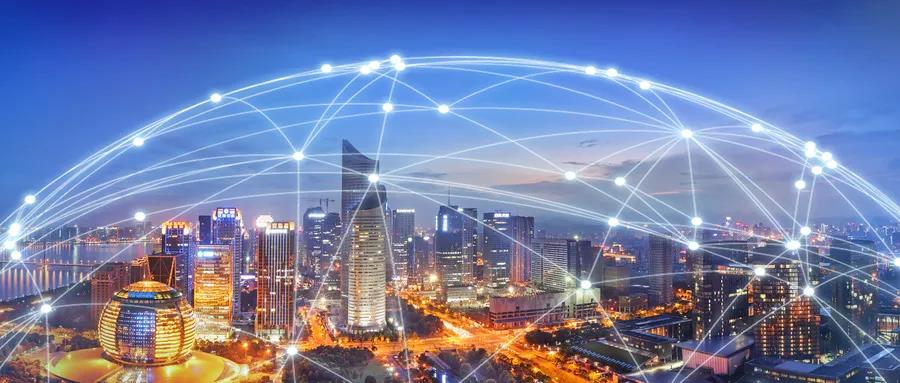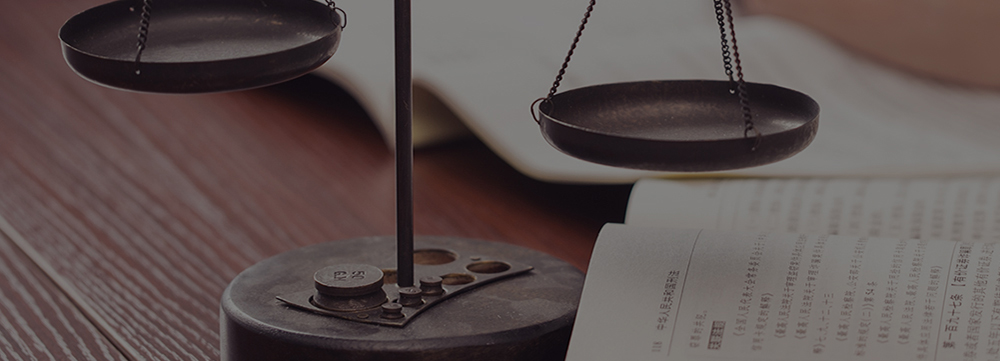
The ongoing pandemic by Covid-2019 has served as a game-changer in the field of legal practice, among the other things, the vibrant use of digital technology in hearing of cases has been brought into focus. Many have written about the legitimacy and application of virtual hearing, while mostly concern the conference sitting in an online platform, by which parties shall still have their presence simultaneously, which brings new challenges such as regarding access to internet and time difference of different disputants. While asynchronous hearing is something beyond the online conference, by which parties can present their cases and arguments without any form of presence (physical or virtual) in the same time by full use of online communication technology.
Some commenters, including world-renowned scholars and experienced legal practitioners have been conscious about and attached high importance to asynchronous hearing, Prof.Maxi Scherer has highlighted the advantages of this approach and opined that asynchronous hearing will probably be the next new normal.[1]Sundaresh Menon, the Chief Justice of Singapore Supreme Court, also expressed his appreciation to asynchronous hearing for its convenience in relieving parties from the burden brought by presence of a hearing virtually orphysically.[2]

It is premature to speculate the future of asynchronous hearing even beyond the pandemic, while it is a fait accompli that asynchronoushearing has already been used in legal practice and enshrined in litigation regulations by a few of state courts. In Singapore, State Courts Centre for Dispute Resolution(SCCDR) had launched an Asynchronous Court Dispute Resolution Hearing By Email pilot (hereafter referred to as aCDR pilot) in reaction to pandemicsituation, which came into effect since 16 March 2020.[3] While in China, the pilot of asynchronous hearing has been commenced even before the occurrence of pandemic by local internet courts.[4] Hence,in the event when adjudicators decide upon asynchronous hearing, it is for the parties or counsels to adapt to it, and to maximize the utility of such method of hearing. Therefore,this article will give overviews on asynchronous hearing in Singapore and China below, and culminate in the author’s brief comment.
[1] Maxi Scherer ,Asynchronous Hearings: The Next New Normal?http://arbitrationblog.kluwerarbitration.com/2020/09/09/asynchronous-hearings-the-next-new-normal/
[2] Sundaresh Menon,'Technology and the Changing Face of Justice',inMaxi Scherer (ed), Journal of International Arbitration, Kluwer Law International 2020, Volume37 Issue 2, p. 174
[3]See SCCDR: REGISTRAR’S CIRCULAR NO.2OF 2020,
https://www.statecourts.gov.sg/cws/Resources/Documents/RC%202%20of%202020.pdf
[4] See Guodong Du et al., AClose Look at Hangzhou Internet Court: Inside China's Internet Courts Series-06
https://www.chinajusticeobserver.com/a/a-close-look-at-hangzhou-internet-court
Singapore’s aCDR pilot
Under aCDR pilot,parties are required to handle submissions and exchange of arguments, evidences and other relevant documents through email. This approach is applicable to certain types of disputes including: (1)Non-injurymotor accident (“NIMA”) claims;(2) Personal injury claims; (3) Medical negligence claims; and (4) Claims in negligence, including professional negligence claims that are filed in the District Court. The workflow is as follow:
(1)While aCDR is applicable, SCCDR will send a notice to fix the date of aCDR hearing to parties after the submission of memorandum of appearance. After that, a Mentioning Counsel shall be appointed to send an email to the account of Judicial Officer(JO) on behalf of all parties not less than two working days before the date of the aCDR hearing, to report the progress of case and application for the court’s direction. The Mentioning Counsel can be appointed through all parties’ consent, if not,will by default to the plaintiff’s counsel.
(2)Parties’ submissions and adducing of evidences shall be done through email in the same time limit, to allow for the court to consider further direction on the hearing date.

(3)The court reply to the Mentioning Counsel’s Email on the hearing date, by giving directions and fixing further aCDR hearing as necessary. The court may attach any query about the case or requirement for submission further evidence to the replying email. With the regard, the court may adjourn the hearing for up to one week to address these questions.
(4)Provided any query or requirement is issued, the counsel shall reply to the court in the same email chain not less than two working days before the date of the next aCDR hearing.
In a nutshell,aCDR allows for parties and counsels to make their submissions and react to court’s indications at their convenience within the fixed time limit, and the court can also handle the proceeding without all parties’ attendance in a segmental and incontinuous manner, which has freed parties from gathering in the same time and enormously promote efficiency. Nonetheless, there are some downsides of aCDR, for instance, the transmission of documents through email has limited the maximum size of attachments to 30M for each email, which will produce inconvenience while big size documents are involved that are material to the outcome.
China’s Trial Asynchronous Hearing
China’s practice of asynchronous hearing can be traced back to the year of 2018, when Hangzhou Internet Court distributed its “Trial Procedures for Asynchronous Hearing of Internet-related Cases” (涉网案件异步审理规程)( hereinafter referred to as Trial Procedures)[5] on 31 May of that year, remarking the first procedural rules on asynchronous hearing on internet cases across the world. The features of Trial Procedures are as follow:
1. Definition and prerequisites for asynchronous hearing
As per the Trial Procedures, asynchronous hearing is defined as a hearing model which is conducted in a manner that the judges, plaintiffs and respondents log in the litigation platform in different times within a fixed period.
Asynchronous hearing is only applicable to cases with simple facts, clear legal relationships and fitness for being heard online, and on the premise that all disputing parties so agree, or the court so decide at one party’s request or consent while the other party is silent on the use of asynchronous hearing.
Article2(2) of Trial Procedures stresses that asynchronous hearing shall not be used without consent of either party, it does not express address whether the court may decide to use over one party’s explicit objection, while reading Article 2 of Trial Procedures contextually, the answer is negative for it does not endow the court with such power.
2. Process of asynchronous hearing
The communication and exchange of documents is handled wholly through the internet court’s litigation platform, which is also connected to some electronic commerce trading platforms like Taobao, Tmall.[6] Written submissions, adduce and examination of evidences are conducted through this platform. Unlike a documentary-only trial, asynchronous hearing features interaction between judge and parties in different times and places, by means of questioning and debate phases.
The judge may decide on the commencement of questioning phase, which is consist of mutual questioning and query by the judge. The mutual questioning session shall be completed within 24 hours. The session of query by judge has no time limit, the judge may close this phase on its own initiative.
Parties shall submit debating opinions within 48 hours after the conclusion of questioningphase, and present last remarks within 24 hours from the conclusion of debatephase. Any failure to make submission in time can be deemed as waiver of procedural rights.

3. Examination of evidences
Trial Procedures per se does not explicit address the evidence issues, which shall be read together with the procedural rules on internet court issued by Supreme People’s Court in September of 2018, it explicitly states that internet courts shall recognize the authenticity of electronic data if any of following conditions is satisfied:[7]
(1)the authenticity of such data can be identified through technical means like electronic signature, unitrust timestamp,[8] hash value, blockchain or other means with the same functions to avoid the falsification of evidences, or;
(2)the authenticity of such data has been acknowledged by the evidence storage platform run by the internet court.
The forensic tradition in China is more close to that in civil law family, under which the court will give higher weight to documentary evidences with originals, while oral statement or cross-examination of witness are less significant. Likewise,the court will incline to give weight to electronic evidences if they are proved to be “not being tempered after crystallization” through certain technical means.
For asynchronous hearing, such factor is of significance for the judge may exam the authenticity of evidences without parties’ attendance, in particular for disputes concerning electronic commercial transaction, where almost all relevant information can be recorded as electronic data at the outset. Such paperless transaction reflects the giant development of Internet Technology, and may probably be the mainstream model for all commercial transcations.
By far, China’s asynchronous hearing practice goes smoothly in tackling with simple, small claim and internet-based cases. That being said, it is not likely to replace traditional hearing model in the near future, as summarized by commentators,asynchronous hearing is not suitable for cases where: (1) multiple parties are involved, (2) litigations commenced by parties for fraudulent purposes, (3)internet-related disputes with high level of social sensitivity. [9]Apart from these, asynchronous hearing is also not suitable for cases with higher complexity while a mere review on documentary evidences is not suffice.
[5]Available at
https://www.netcourt.gov.cn/#lassen/litigationDocuments
[6] See Guodong Du et al., AClose Look at Hangzhou Internet Court: Inside China's Internet Courts Series-06
https://www.chinajusticeobserver.com/a/a-close-look-at-hangzhou-internet-court
[7] Article 11(2) of Supreme People’s Court’s Several Provisions on The Trial of Cases by Internet Court, Fa Shi2018 No. 16 (《最高人民法院关于互联网法院审理案件若干问题的规定》法释〔2018〕16号)
[8] The original text is “可信时间戳”(unitrust time stamp),which refers to time stamp service provided by UniTrust TimeStamp Authority, an legal entity affiliates to National Time Service Center ofthe Chinese Academy of Sciences
[9]肖建国、丁金钰:《论我国在线“斯图加特模式”的建构——以互联网法院异步审理模式为对象的研究》,载《法律适用》2020年第15期,第107页
Comments
The practices in China and Singapore nuanced with each other in respects of scopes, sitting platforms and detailed processes, while they share similar pros and cons brought by asynchronous hearing. On one hand, asynchronous hearing is convenient and time-saving while compared with the traditional hearings, regardless of in person one or online one. Further, asynchronous hearing may also be more in line with the trend in future under the development of internet technology.
On the other side of the coin, both countries are relatively prudent in expanding the scope of asynchronous hearing. The biggest problem is less engaging than the synchronousone, the latter compels attendees to have an immediate response, through which the adjudicator may have a better fact-finding through the speaker’s remarks,body languages or other demeanors. While in the case of asynchronous hearing,parties may fail to reply to the court’s query for various reasons, which makes asynchronous hearing a de facto documentary-only review.
For legal counsels, it shall be borne in mind that albeit such limitations, asynchronous hearing is not just an illusion by scholars, but already a legal practice. In this respect, traditional forensic skills may not be so useful, while a technology-savvy lawyer with more knowledge on IT will take more advantages in participation of such hearings.

本微信文章仅为交流探讨之目的,不得视为广悦律师事务所或其律师出具的正式法律意见,任何仅依照本文的全部或部分内容而做出的行为及因此带来的后果均由行为人自行负责。



